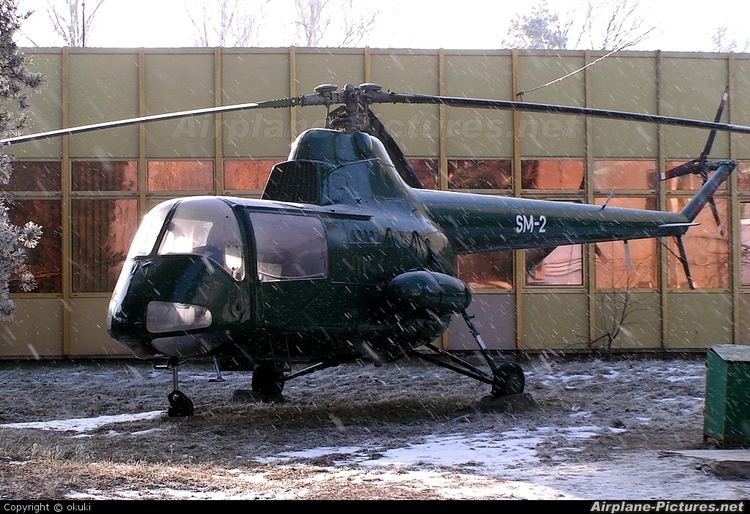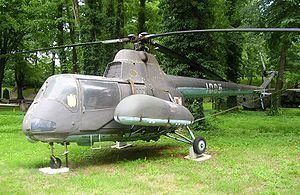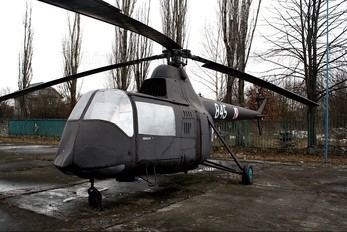Top speed 170 km/h Length 12 m Manufacturer PZL-Świdnik | Wingspan 14 m First flight November 18, 1959 | |
 | ||
mig owiec pzl sm 2
The PZL SM-2 was a Polish light utility helicopter, enlarged version of license-built Mil Mi-1, developed and produced by WSK PZL-Świdnik. It was also known as the WSK SM-2.
Contents

Design and development

From 1956, the Soviet light four-seat helicopter Mi-1 was produced under license in the Polish WSK PZL-Świdnik works in Świdnik, under a designation SM-1 – and as much, as 1594 were manufactured. In 1957, works started in WSK PZL-Świdnik to modernize the helicopter and fit it with an enlarged, five-seat cabin. One of the design goals was to make training easier, by placing the two pilots side by side. The helicopter's main designer was Jerzy Tyrcha.

The most obvious difference was a larger cabin, extended towards the front, but in fact most fuselage parts were reconstructed. The cabin had two wide side doors, sliding rearwards. Unchanged were: the engine, transmission and rotor, the fuselage boom and the landing gear. The prototype flew first on 18 November 1959. It appeared successful and a limited production started in 1960. Its take-off characteristics and performance were slightly worse, than of Mi-1/SM-1 – one of the reasons was an unsuitable carburetor intake, but it was improved only on some helicopters.

Only 91 helicopters were produced (some sources say 85). They were produced only for Poland, while the SM-1 remained main export product of Świdnik at that time. Three similar variants were produced: military liaison aircraft, air ambulance and flying crane; their equipment could be exchanged.

Basic liaison and transport variant had seats for three passengers on a rear bench and one seat next to a pilot. In the air ambulance variant, single stretchers were carried in the fuselage – loaded through a special hatch in a fuselage front, on the right side. Additional two injured could be carried in detachable external closed capsules on either side of the fuselage. All variants could carry additional external fuel tank 140 l on the left side, extending range to 500 km (it could not be used with side capsules). The crane variant (known as SM-2D) was used in limited numbers for search and rescue missions; it had a hydraulic winch that could lift 120 kg, in a place of a right front seat.
Operational history
SM-2s were used mainly by the Polish Air Force and Polish Navy – 75 were delivered, from late 1960. Few were used by Ministry of Internal Affairs (police aviation) and civilian air ambulance service (4 helicopters). Most were withdrawn in late 1970s and replaced with Mil Mi-2, last – around 1981.
Only one SM-2 was exported to Czechoslovakia, used in 1963–70 by the Ministry of Internal Affairs (registration OK-BYK), then Slov-Air until 1975 as commercial utility aircraft (registration changed to OK-RUV).
Three SM-2s are preserved in museums in Poland: in Polish Aviation Museum in Kraków, in Kołobrzeg and Drzonów. Apart from museums there exist SM-2 in Dęblin, in collection in Góraszka and in PZL Świdnik. One is preserved at the Helicopter Museum, Weston-super-Mare, in the United Kingdom and one in the Czech Republic (Praha-Kbely).
Operators
Specifications
Data from Jane's All The World's Aircraft 1965–66
General characteristics
Performance
